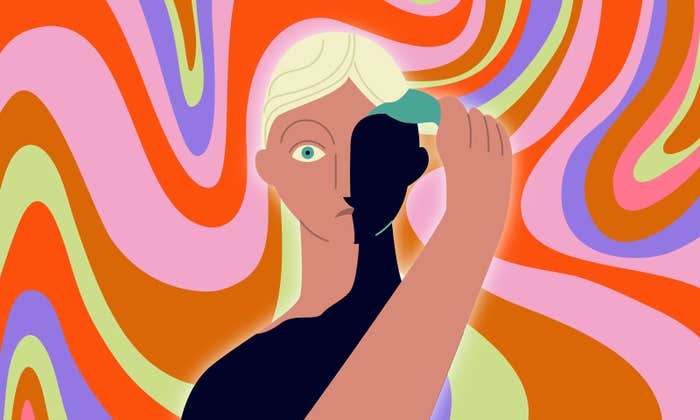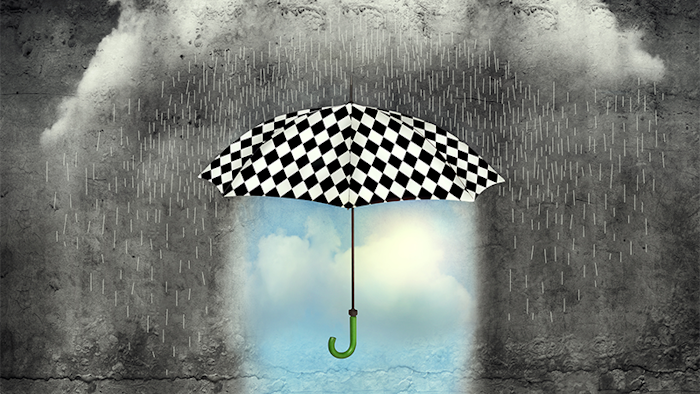If the Internet has shown me one thing, it’s my own astounding capacity to waste time. The rabbit holes online are deep and rich and usually absolutely fruitless. But I’m fascinated by anything that’s addictive, and my personal black tar heroin is, without doubt, “fail” videos. You know the sort—a 10-minute compilation of six-second clips of people who are about to wind up on Tosh.0, but don’t know it yet. I love watching a bike jump gone wrong, or a girl burn off a huge chunk of hair with a curling iron. Skateboards, especially, seem to play a role in an impressive fraction of fail videos, and I would like to take this moment to thank their riders for remembering to film and upload their gnarliest errors to the Internet; it’s amazing that some of you can still operate a computer. And if the view counts on these YouTube videos are any indicator, it seems I’m definitely not alone in my addiction to the misfortune of others.

It’s not like fail videos are a new phenomenon caused by the Internet, either. Bob Saget was breaking down VHS footage of America’s Funniest fails well before most people ever heard of a thing called “email.” I suspect that at some point a Stone Age man burned his rear while hopping across a fire and his buddies laughed at him, and court jesters have certainly suffered greatly throughout history for the entertainment of others. If such malicious joy is both universal and ancient, where does it come from? What is its function?
The Germans coined the term schadenfreude (literally translated as “harm-joy”) to describe that feeling of enjoyment you get when you hear Justin Bieber got another D.U.I or that Tom Brady got suspended for four games because he knowingly cheated at football (assuming you’re not a Patriots fan). Schadenfreude has recently begun to receive more attention from psychologists and philosophers, and the emotion has been induced experimentally and analyzed. Lea Boecker, a researcher at University of Cologne’s Social Cognition Center, has taken German soccer fans and had them watch videos of the Dutch national team missing penalty kicks (there is a longstanding rivalry between these countries) and the German team succeeding in the same task. She found that viewers smiled wider when watching the Dutch blow it (pdf) than they did while watching the Germans convert successfully. Boecker thinks part of the appeal is that schadenfreude is tied to self-esteem. “You feel better. You feel lifted up in comparison to the other person,” she says.
Fail Blog, one of the biggest compendiums of fail videos and pictures on the Internet, has also recognized the self-esteem benefits of their content—an awareness reflected in their motto: “Helping you feel better about yourself every day.” The site’s editor-in-chief, Emily Huh, says, “You feel a little better about yourself when you visit Fail Blog. Our mission is to make people feel happy for five minutes a day.”
Richard Smith, a psychologist at University of Kentucky who has literally written the book on schadenfreude, thinks our love for the suffering of others may have an evolutionary origin. Darwin proposed that all of life is in constant competition for resources and mates, and Smith thinks that our malicious delight may stem from a knowledge that we’re getting a leg up on the competition. “Let’s say you’re a guy and you’re in love with a woman, and that’s just a fact. But there’s another guy who’s also in love with this woman. She’s going to make a choice; it’s either you or him. If that rival suffers—falls into the mud puddle or whatever it might be—and is no longer a competitor, are you going to be sorry about that? You’re getting the girl. That’s good.”
Likewise Boecker says that envy is the opposite emotion of schadenfreude, and fail videos may have a therapeutic effect and reduce our jealousy. Fail videos show vulnerable people who don’t have it together. These videos seem to represent a counterpoint to social media sites like Facebook where individuals tend to mostly post content that shows them in a good light. Such a biased presentation has been shown to cause envy and low self-esteem in heavy users.
“You know, humor doesn’t change a whole lot. If you watch a comedy from the 1920s, the fat, rich man stepping out of a Cadillac and into the mud is just as funny now.”
However, there also seems to be a limit to how severe the suffering can be before empathy turns the delicious taste of schadenfreude foul. Videos containing gore or intense violence are popular in some dark corners of the Internet such as 4chan’s infamous /b/ board, but Boecker suspects that the appeal of these extreme fail videos may be more closely related to how people can’t look away from disasters, like train wrecks or hurricanes. “It attracts people somehow. No one would actually laugh in those videos. Maybe [it’s] sensation seeking,” she says.
The line between schadenfreude and disgust has a lot to do with the circumstances of the event, too. Usually if the person dies, the content ceases to generate any schadenfreude in the average, well-adjusted viewer, but even these morals are flexible in some cases. When Osama bin Laden was killed by U.S. soldiers, for instance, President Barack Obama tactfully dodged questions about whether he was glad the terrorist leader was dead, saying there were no “high fives,” but regular citizens around the country showed less diplomacy, gathering in public places chanting, “U-S-A!” and openly celebrating the killing.
Some of the jubilance surrounding bin Laden’s death also highlights another key enhancer of schadenfreude: justice. Most people believe Osama got what he deserved. We love to see the guy who cut us off in traffic immediately get pulled over by the cop. Some of the sweetest fail videos often begin with the same kind of cockiness or arrogance that is erased by the gods of karma before being uploaded to World Star Hip Hop. Bonus points if the misfortune befalls someone trying to take a selfie.
It’s always easier to dislike people who think they’re better than you, and maybe the inherently narcissistic act of recording oneself is enough to allow viewers to push away empathy and embrace some guilt-free schadenfreude. “Hey everybody look at me and this super cool yoyo trick I can do!”
In an interview in Parade magazine from 2012, Jay Leno was asked if the digital age had affected how he approached comedy. He responded by saying, “You know, humor doesn’t change a whole lot. If you watch a comedy from the 1920s, the fat, rich man stepping out of a Cadillac and into the mud is just as funny now.” Well said, Jay. Hopefully somebody will be there to record it on their phone and upload it to YouTube for me.
David Shultz is a freelance journalist covering biology and science of all sorts. He tweets at @dshultz14.



















